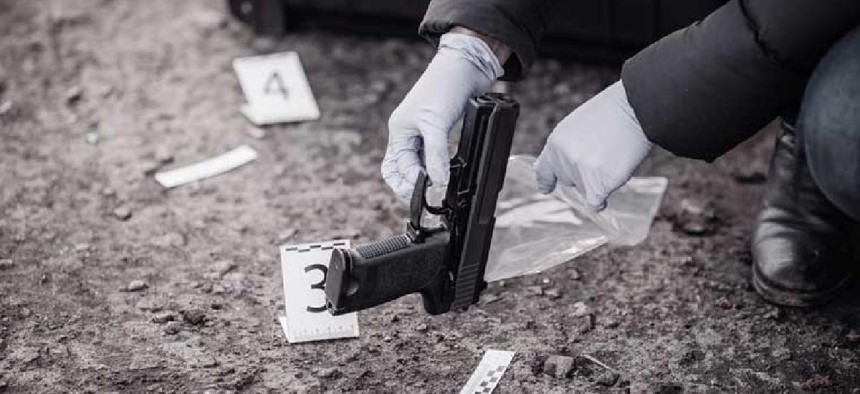Baltimore takes a data-driven approach to targeting gun trafficking

The city's Gun Trafficking Intelligence Platform connects purchase data, gun recoveries and ballistics reports to better understand the ecosystem of illegal firearms.
The Baltimore Police Department (BPD) is using a data intelligence tool to identify illegal firearms and combat gun trafficking.
BPD worked on the tool, called the Gun Trafficking Intelligence Platform, with Everytown for Gun Safety, a gun violence prevention organization.
“This is a first-of-its-kind data intelligence tool that identifies illegal firearms, helps to solve violent crimes and helps to combat gun trafficking,” said Nick Suplina, managing director for law and policy at Everytown. “It uses several datasets, but chiefly crime gun trace data and ballistics information…and aggregates that information, visualizes it and applies our learnings on what trafficked guns look like to identify networks, individuals and entities that might be involved.”
When police officers recover a gun in a crime, they notify the U.S. Bureau of Alcohol, Firearms, Tobacco and Explosives, which starts tracking a gun through its eTrace system. That involves finding the wholesaler to whom the manufacturer sold the gun, the retailer that purchased the gun from the wholesaler and then the person who was the retail purchaser, which means “going, sometimes physically, to a gun dealer and trying to find the record of transaction, which is often kept on paper,” Suplina said.
At that point, the department has the buyer, date of purchase and firearm type, which they load into the platform along with when, where and on whom the gun was recovered. “You now have two ends of a story,” Suplina said. “If you take that data and multiply it by 5,000 and start connecting lines between those datasets, that’s where you get the real intelligence value of the tool.”
The other key dataset is ballistics from shell casings, which helps identify the types of guns being used. “You might have shell casings recovered in two different crime scenes over a period of weeks or months and not have a firearm associated with it, but know those shootings are linked,” Suplina said. “When you do recover the firearm, you’ve got even more of a story: When this firearm was used in several incidents, it was recovered in another and being able to look upstream and see where gun came from, now you’ve got a lot of information to work with.”
The platform also uses data from BPD’s ShotSpotter, a real-time gunshot detection and alert system that provides a sense of where guns are being fired in the city.
By linking these previously disconnected datasets, BPD can start to see the interconnection of people, networks and entities that may be related to the trafficking of firearms.
“At least 82% of the guns recovered in Baltimore last year were originally purchased outside of the city — with nearly 65% of the guns coming from outside of the state of Maryland,” Mayor Brandon Scott said in a March 3 press release announcing the partnership.”As a city where nearly all of our crime guns originate outside of our borders, we have an obligation to focus on the source of the firearms just as much as harm they cause.”
Another benefit of the platform is crime-solving. By identifying people related to the firearm and connecting incidents, officers and detectives can improve investigations and pinpoint where to find witnesses. “In that sense, anybody working on violent crime in the police department may find utility in this tool,” Suplina said.
But it was built with investigators and detectives focused on trafficking, he added. “This is really an intelligence tool. It’s a lead-generation tool that opens up a new universe of trafficking cases to be made,” Suplina said.
The platform, being provided at no cost to the city, is the next step in Baltimore’s Crime Gun Intelligence Center, which was conceived in 2019 and kicked off in January to look at federal gun and ballistics databases to track guns used in crimes. It uses ATF’s National Integrated Ballistic Information Network, the only national network that allows for the capture and comparison of ballistic information. The network and eTrace are key tools that the agency uses to identify shooters and the sources of their guns.
Gun crime is a nationwide problem. In 2020, gun violence killed more than 19,000 people in the United States – the highest death toll in two decades, according to the Gun Violence Archive.
“Without a uniform set of federal laws, we’re really only as strong as the nearest, weakest state laws,” Suplina said. “So, you have a natural environment for trafficking from source states with easy-to-acquire guns into states with stricter laws.”
Everytown is looking to bring the intelligence tool to anyplace “committed to fighting trafficking in their jurisdiction,” he added.





